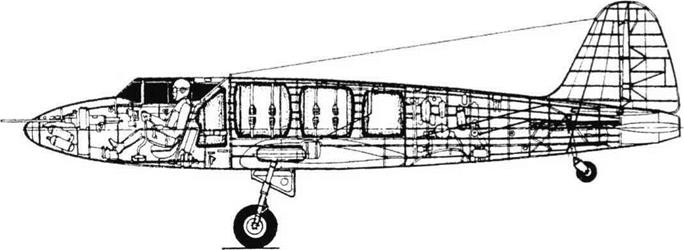Kostikov 302, Ko-3
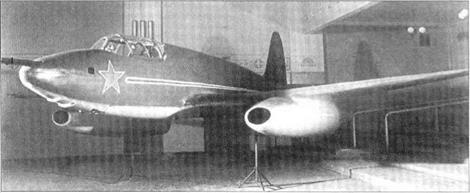
Purpose: Simple jet (rocket + ramjet) fighter.
Design Bureau: RNII (reaction-engine scientific research institute) and OKB No 55.
By 1940 the idea ofthe PVRD (ramjet) was familiar in the Soviet Union, mainly to boost the speed of piston-engined fighters. In 1940 Professor Mikhail Tikhonravov, on the RNII staff, had the better idea of making a simpler and lighter fighter with a ZhRD (liquid-propellant rocket) in the tail and PVRDs under the wings. This could put together various thing s already developed in the Soviet Union to create what might have been a cheap and quickly produced fighter which, apart from short range and endurance, would have had outstanding performance. Unfortunately, perhaps because it appeared unconventional, this project suffered from endless argument and foot-dragging, finally falling victim to a decision to abandon all such aircraft. According to Shavrov, ‘The proposal did not attract any objections from A G Kostikov, Director of the RNII. It was continued as a preliminary project, and approved by the Technical Council of the RNII in spring 1941. It was later examined by a commission of specialists at the WA’ (air force academy). This commission, comprising S A Christianovich, A V Chesalov, S N Shishkin, V I Polikovskii and others, proclaimed that This project does not bring out anything new’. Work proceeded at a snail’s pace, and Kostikov then took the proposal to the NKAP (state commissariat for aviation industry), where Tikhonravov defended it on 17-18th July 1942. In No vember 1942 Ko stiko v showed the proposal to K E Voroshilov, and eventually Stalin himself gave authority for work to resume, appointing Kostikov chief designer. From this time onwards many documents called the project ‘Ko-3’. Funding was
provided for two prototypes, and to build these the RNII set up OKB-55, appointing as director M R Bisnovat (see earlier) and A A Andreyev as his deputy. Tikhonravov did the aerodynamic calculations, while stressing was in the hands of V D Yarovitskii. By spring 1943 two 302 aircraft were almost completed. Testing in the T-104 tunnel at CAHI (TsAGI) began at this time. In 1943 the original proposed ramjets were changed to a new design by Vladimir Stepanovich Zuyev. These were initially tested in a half-scale form, but full-scale testing was never carried out. After much argument it was decided to forget the ramjets and complete the aircraft as the 302P (Perekhvatchik, interceptor) with the rocket only. The PVRD attachments under the wings were faired over, and the wing span reduced. This was flight-tested as a glider at the LII from August 1943, towed to altitude by a North American B-25 and Tu-2. The assigned pilot was initially S N Anokhin, followed by M L Gallai and B N Kudrin, with V N Yelagin as test engineer. The 302P was found to be ‘exceptionally good, stable and pleasant to fly’, and in March 1944 the second 302P was being tested in the T-104 tunnel at CAHI. In the same month the whole programme was cancelled. A recent Russian magazine article about the 302 omits any mention ofTikhonravov.
The 302 was made mainly of wood, with a monocoque fuselage and smooth skin of
Delta and Shpon veneers bonded by Bakelite – type plastics. The wings had 15-per-cent RAF.34 profile at the root, tapering to 8-percent NACA-230 near the pointed tip. In contrast, the control surfaces were of Dl alloy with fabric covering, the starboard aileron, rudder and both elevators having trim tabs. The rocket engine was a Dushkin/Shtokolov D-1A with a main chamber rated at 1,100kg (2,4251b) at sea level and a cruise chamber rated at 450kg (992 Ib). Under the wings were to have been installed the ramjets, but information on these Zuyev units is lacking. Their nacelles were to have been oval, with the major axis horizontal, faired neatly into the wing. The all-rocket 302P had tanks for 1,230kg (2,712 Ib) of RFNA (concentrated nitric acid) and 505kg (1,113 Ib) of kerosene. The cockpit, which was to have been pressurized, had a canopy hinged to the right and a bulletproof windscreen and frontal armour. The main and tailwheel landing gears were to have been retracted hydraulically, and the same system would have operated the split flaps. No documents have been found describing how the environmental and hydraulic systems would have been energised. Two 20mm ShVAK cannon were to have been mounted in the nose and two more in the bottom of the forward fuselage, each with 100 rounds. In addition, there was to have been provision for underwing racks for RS-82 or RS-132 rockets or two FAB-125 bombs.
|
 |
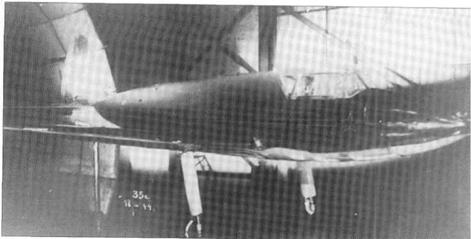 |
With the benefit of hindsight this appears to 302P in CAHI (TsAGl) wind tunnel. have been a considerable case of ‘might have been’. Kostikov was a political animal who saw in Tikhonravov’s proposal a means to gain advancement and power. Instead, in 1944 a commission headed by A S Yakovlev found him responsible for the failure of the 302 to develop on schedule; he was dismissed from his post and later imprisoned.
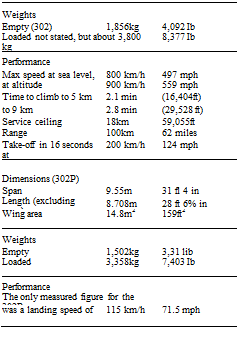 302P
302P
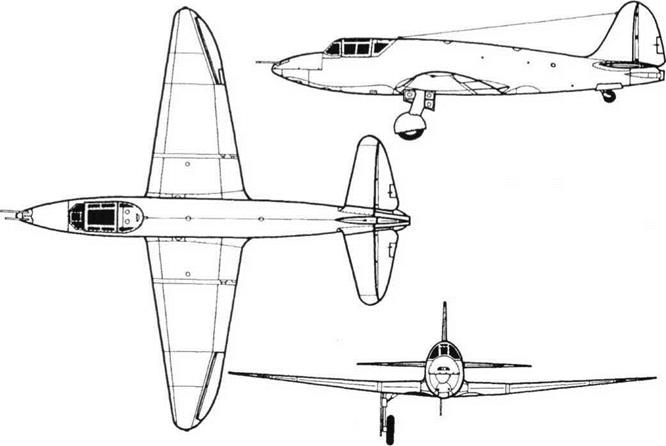
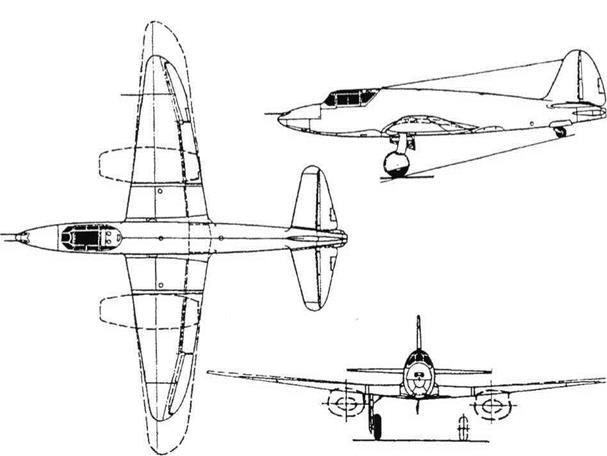
|
|
|
|
